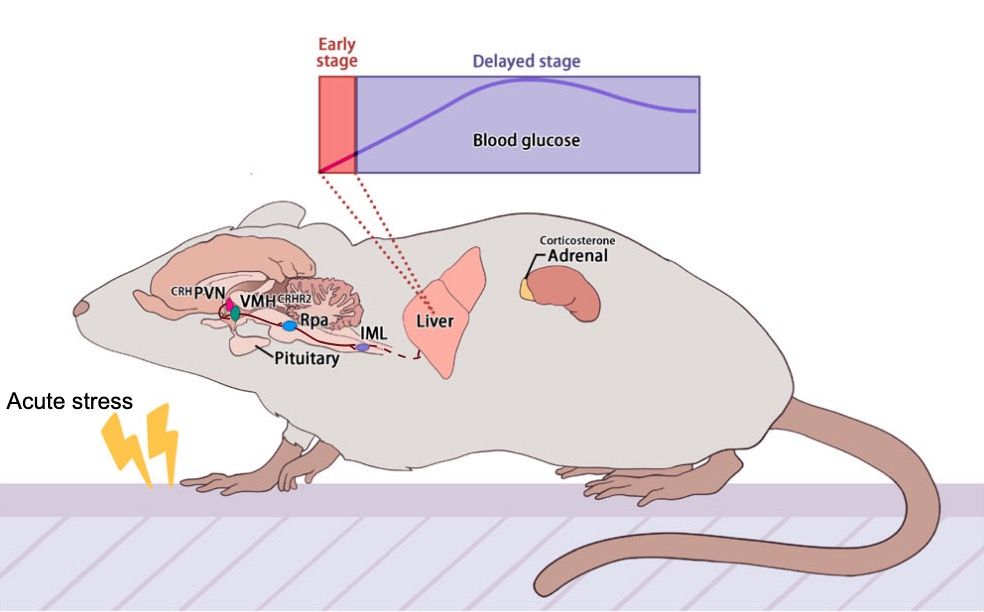A team led by Researcher LIU Ji from the University of Science and Technology of China (USTC) of the Chinese Academy of Sciences (CAS) unveiled an adrenal independent pathway, hypothalamus-sympathetic-liver (HSL) axis, to mediate stress-induced glucose release. The study was published in Nature Communications.
In response to stress, the central nervous system of animals release blood glucose rapidly to cope potential threats. Classic theory posits that stress-induced glucose release is controlled by hypothalamus-pituitary-adrenal (HPA) or sympathetic-adrenal-medullary (SAM) axes. However, both pathways are mediated by adrenal and exhibit significant time delays, which does not align with the demand for rapid glucose release during stress response.
To find out whether there is an alternative pathway for stress-induced glucose release, the researchers utilized virus tracing and optogenetic manipulations to map the neural pathway from paraventricular nucleus (PVNCRH) to ventromedial hypothalamus (VMH). They used optical stimulation to activate CRH neurons in paraventricular nucleus (PVNCRH) in mice and observed a boost in glucose level. They also identified that the activation of CRH receptors, specifically CRH receptor subtype 2 (CRHR2), is essential for glucose regulation during stress by using CRH receptor antagonists and genetic knockout models.
Then, the team investigated the sympathetic innervation of liver and demonstrated that sympathetic activation influences CRH in glucose modulation. They activated CRHR2 in VMH (VMHCRHR2) via optogenetic stimulation and revealed that VMHCRHR2 receive projections from CRH and regulate hepatic gluconeogenesis via the sympathetic innervation, identifying an adrenal-independent neural pathway for rapid glucose release.

Schematics of the HSL axis mediating stress-induced glucose release. (Image by Prof. LIU’s team)
Moreover, by comparing the time windows of adrenal-dependent and adrenal-independent regulation, the team concluded that the fast stage of glucose release was mediated by the HSL axis, while the delayed stage was regulated by adrenal hormones.
This study revealed a new pathway for stress-induce glucose release, providing critical insights into glucose homeostasis and potential therapeutic targets for stress-related metabolic disorders.
Paper link: https://doi.org/10.1038/s41467-024-52815-3
(Written by LIU Danxu, edited by ZHANG Yihang, USTC News Center)